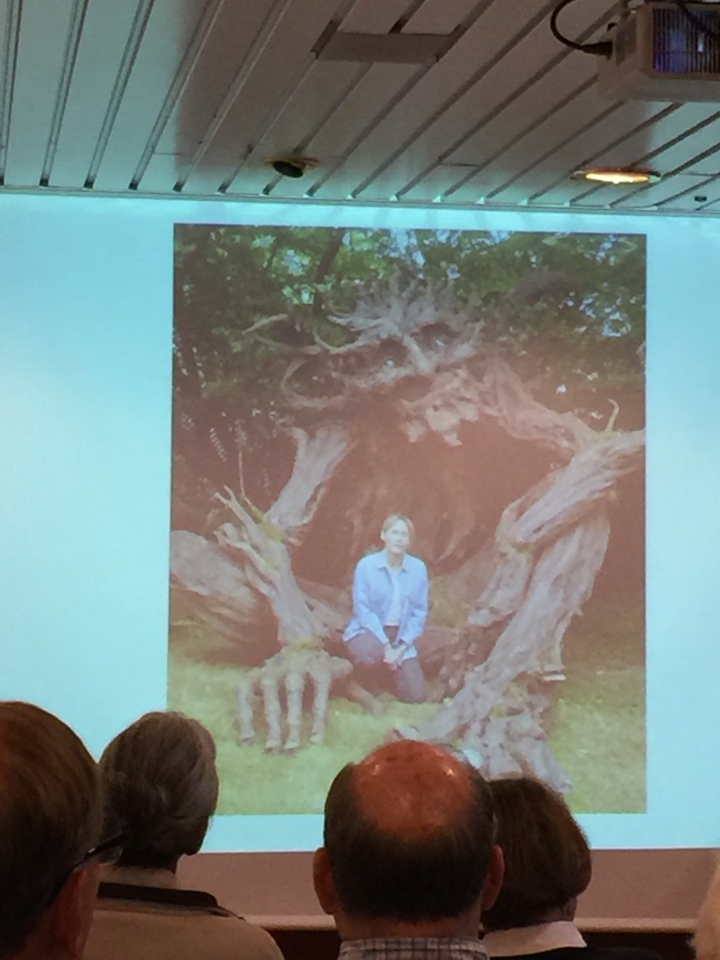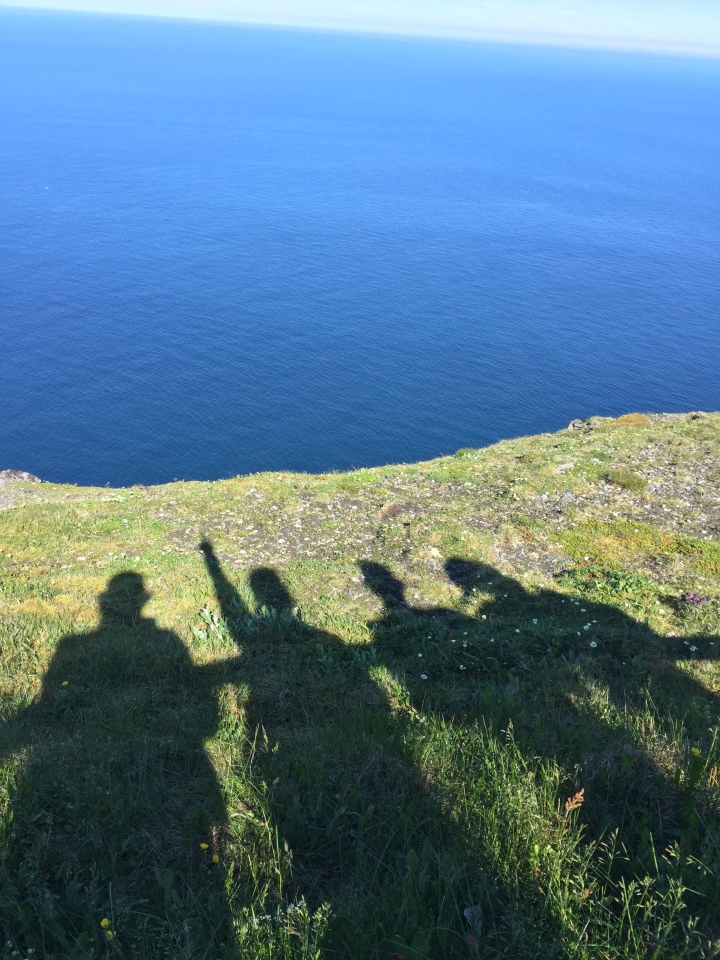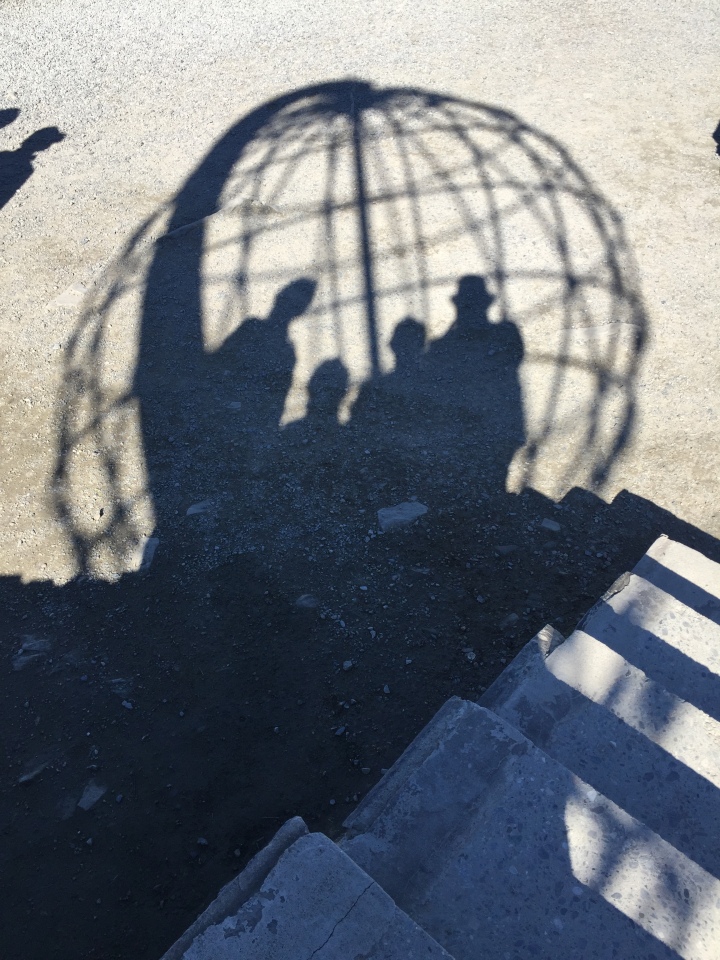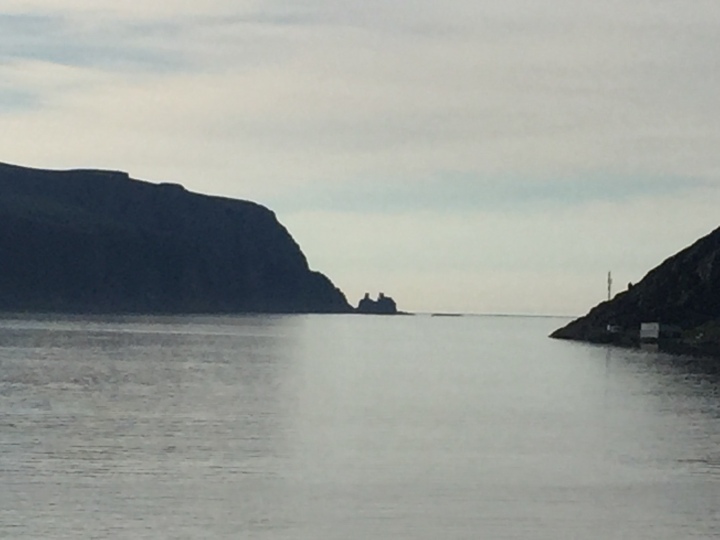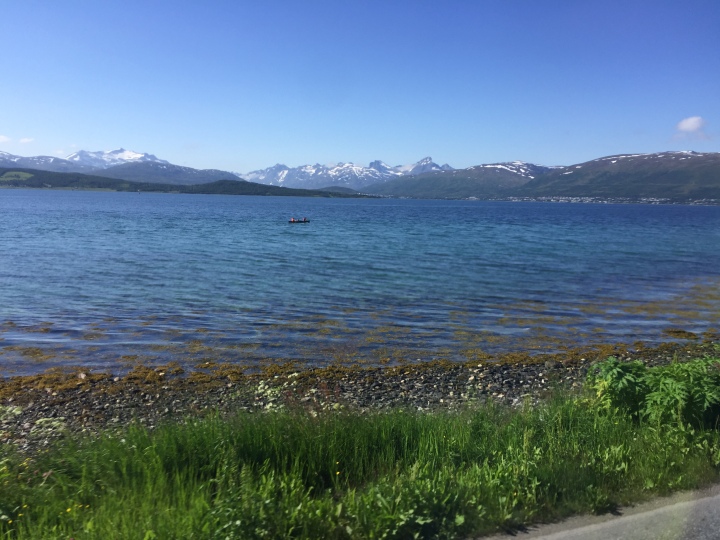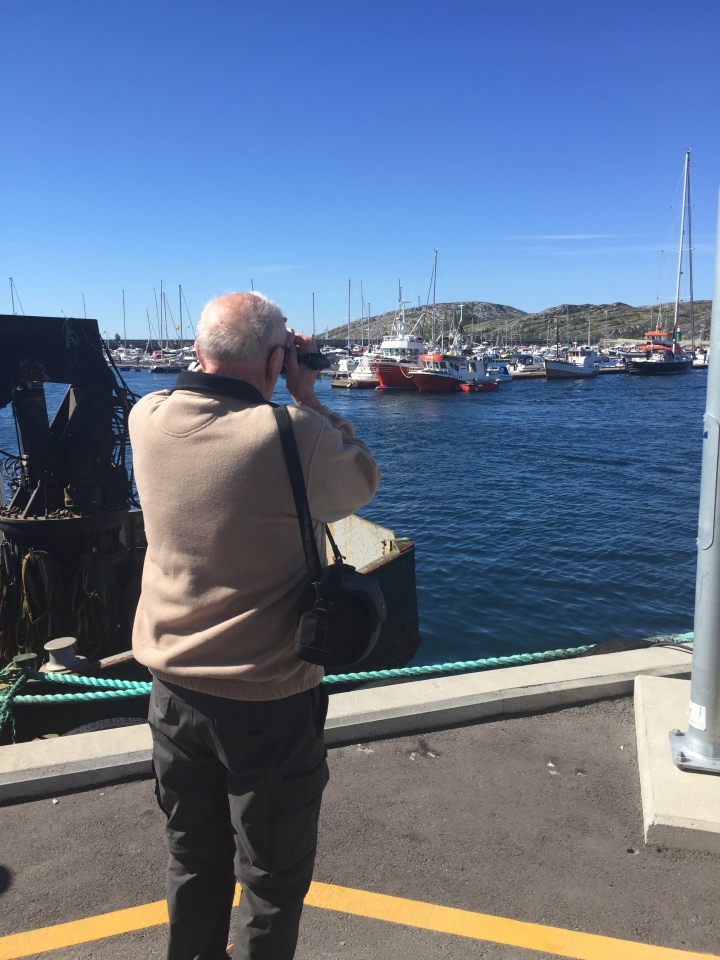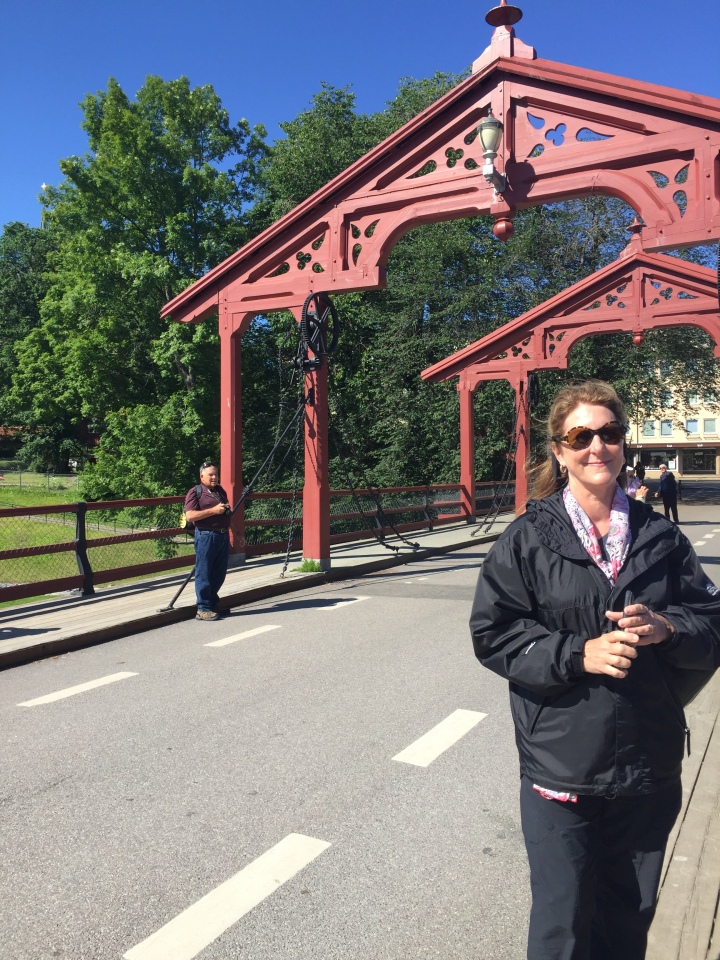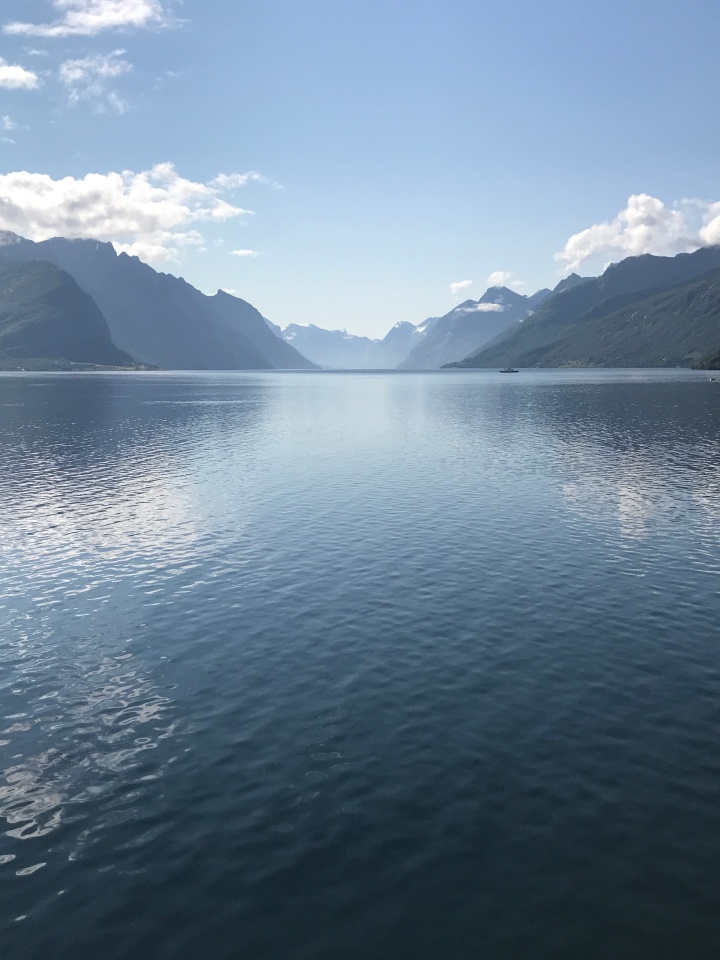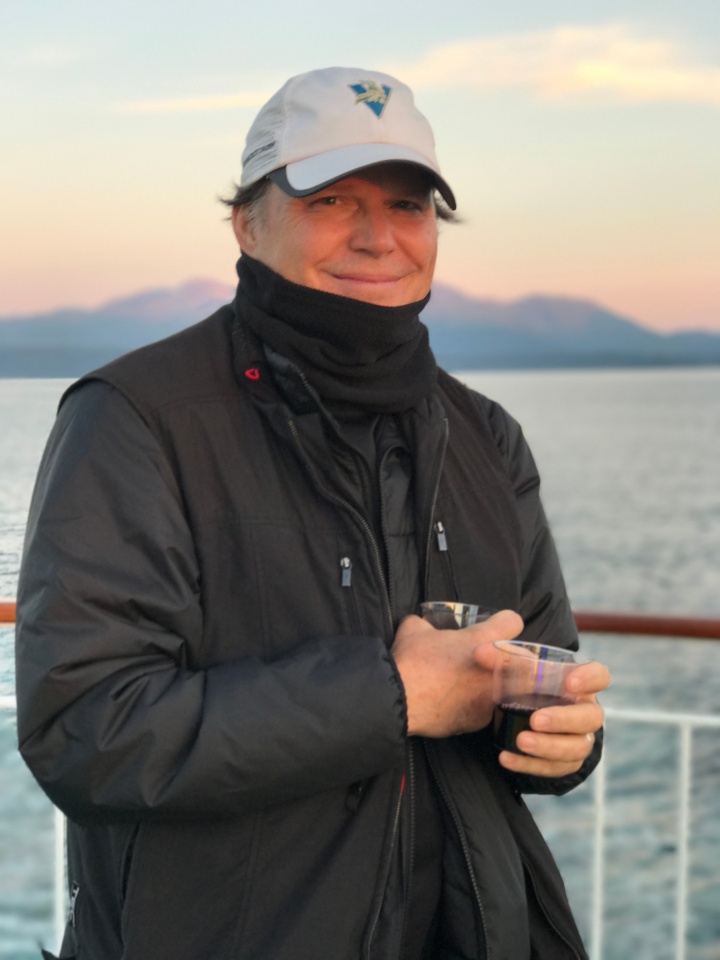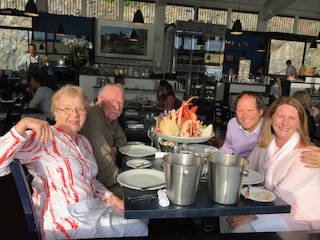This morning we awoke in Trondheim (south bound this time). Bypassing the breakfast buffet for the first time in two weeks, we walked thirty minutes into town to find a coffee.
The cathedral where the royalty are crowned or these days, blessed by the church, is located here. We saw it on tour with Judit going north, but we sought points of interest we missed the first time: The Statue of St. Michael atop the cathedral which in itself is impressive, but better still, the sculptor was a child of the 60’s and the face on the Angel St. Michael is none other than that of a youthful Bob Dylan.
The other sculpture we never found was a gargoyle of the stone mason preparing to set the last stone. Legend has it that if the Cathedral is ever completed, a mighty wave will crash into the city and destroy the Cathedral, so to avoid this catastrophe, the stone mason never finishes his job. I had to buy a post cards to find the image, and Bob Dylan’s face too!
Last night we watched the “midnight sun” for the last time with Judit, talking, drinking some wine. Life is the same everywhere as we leave the business of touring and head back to our day to day lives in Dallas and Budapest. She knows the Dallas theme song by heart and starts to sing it every time we mention “Dallas.”

Long after “sunset” we met Adi. She works for the Norwegian government. She was headed back to work after a few days with family and friends. She did not take a cabin and was prepared to pass the time overnight on the 5th Deck Fantail ‘Veranda.’ Her English was impeccable as she studied for a time at Berkley, California. She works with citizens who need government assistance for a variety of reasons. She shared her wine with us. It was a bottle she brought on board with us, and she explained that Norwegians shake their heads at tourists who spend unconscionable amounts of money on food and drink aboard these ships. Based on our consumption, it is safe to bet that we will see at least a 30% incidentals charges over and above the tips and base cost of the trip. But, it’s foreign money and after a couple of Aquavit, it is not worth the trouble to back into the math to figure out how expensive those shots were.
Our fantail friend was interested in our experience and I was able to explain my two favorite moments were the Midnight Cathedral Concert at the Arctic Cathedral, and the visit with Sami Culture Experience with the Utsi family. So taken were we with the experience that we purchased Reindeer hides.

They are soft and cozy and keep you warm even on the coldest of Arctic Circle evenings (even though we only experienced the “cold” of “deep summer.” ) She admitted that things in Norway like everywhere else were slow to change, quick to criticize and stuck in ways that perpetuated the problems in the first place.
We told her about our visit to the Eider Ducks on the Vega Island World Heritage UNESCO site. It was a marvelous experience and one every person should have. The ducks provide a unique down that has amazing thermal qualities. The female ducks begin to molt after they lay their third of four or six eggs.
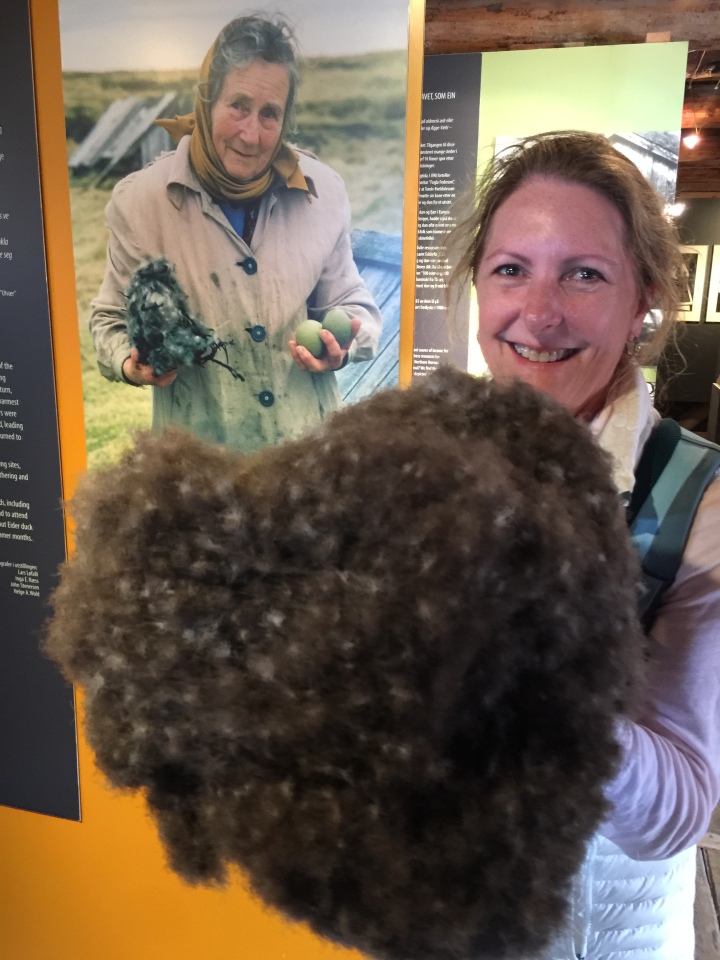
After the chicks are out of the nest, the humans harvest the down, clean it and use it for cold weather clothing, pillows and comforters. It is intensely expensive, but the quality is like none other. The great thing about it all is that the ducks have learned over the centuries that the humans will protect them from predators. So the symbiotic relationship between the humans and the ducks has been cultivated over centuries. Of course mankind has screwed up the relationship with oil tanker spills, the introduction of predatory minks and other unfortunate occurrences, including a government program to move people off of the islands and into centers of population that allow for a lower cost per capita of public utilities. The ducks and humans have to rebuild the relationship developed over centuries. The information center is very good and we enjoyed our time there, learning about Eider Ducks and how man and nature can work together for the benefit of all. There are about three thousand islands in the Archipelago that is protected. Most are small, but many are large enough to support agriculture and live stock. The cattle and other mammals apparently, have learned to swim from island to island in order to find forage. It must be an amazing site!
As to other things and thoughts. . . I think over all, the fastidious nature with which their bathrooms are kept has been a striking feature of this country. Even in remote areas they are as clean as if waiting for royal guests.
We have found English to be the second language of everyone we have dealt with, and it is usually one of a half dozen languages our service providers speak. It is quite impressive.
By this time just about all that can be said has been said, and all that can be done has been done. New friendships have been made, old ones renewed and reinforced. The old cliché that we need a vacation to recover from our holiday has never felt more true.
The midnight sun, the never ending sunlight does indeed confuse the body and mind. The body nears exhaustion from the twenty four hour sun, the body feels bloated from the never ending buffet meals, the body aches for sleep.
But the eyes see the sunset, and the colors are eye candy and you can feel the nerve endings popping to life in your eyeballs as the prism of purples and oranges paint the horizon, and the eyes won’t close. They see the mountains that rival the Alps, the Southern Alps of New Zealand and the Sierra and Rocky Mountains of North America and they won’t close. They see the crystal clear water, the kind of water one sees in the fjords of New Zealand or off the shore of Saba in the Caribbean or on the Sabinal River at Utopia, Texas and they won’t close.
The mind and spirit keep telling the body: stay awake! You won’t see this again! And you search the bar for an Aquavit from Trondheim because it has the kindest herbs and softest heat. It tastes good on the tongue and feels good in the belly. You can feel it course through the capillaries in your brain and the body aches dissipate, the fatigue evaporates, and the smell of the ocean and the brace of the stiff wind makes time cease.
Too many times on this adventure, the clock and only the clock has dictated sleep. It is a strange experience to walk the halls and public spaces on a ship carrying 750 souls and to be the only one awake. Well, you and the bartender. People sleep in chairs on the decks and in the public gathering places. They are hard naps, because they will eventually awake, and trundle off to their cabins only to stare at the back of their eyelids until raw fatigue takes over.
You get used to the rhythms of the ship and of the ocean. Feeding times are like cattle to the corral, and you will get run over by walkers, canes and grand old dames if you are slow or not vigilant to the buffet and salad bar. And keep your hands and fingers close by at the desert bar. Holy Cow! These people love their sweets. They add a candied strawberry to their mountains of cream, mousse, cakes, puddings and custards claiming “I need my fruit.”
We have three or four kinds of fish at every meal, yes even breakfast. Most of the people on our tour will probably take it easy on their fish consumption for a few days after they get back home. The preferred way to prepare it seems to be poaching. Of course I prefer mine steamed paper wrapped in foil with lemon and dill, salt and pepper. The most appreciated meals have been the feast of the sea buffet, which we had once, and the veal and reindeer steaks. The gravy sauce was really tasty, aside from that the food over all has been quite edible, and there is something for everyone here. But loving fish really helps.
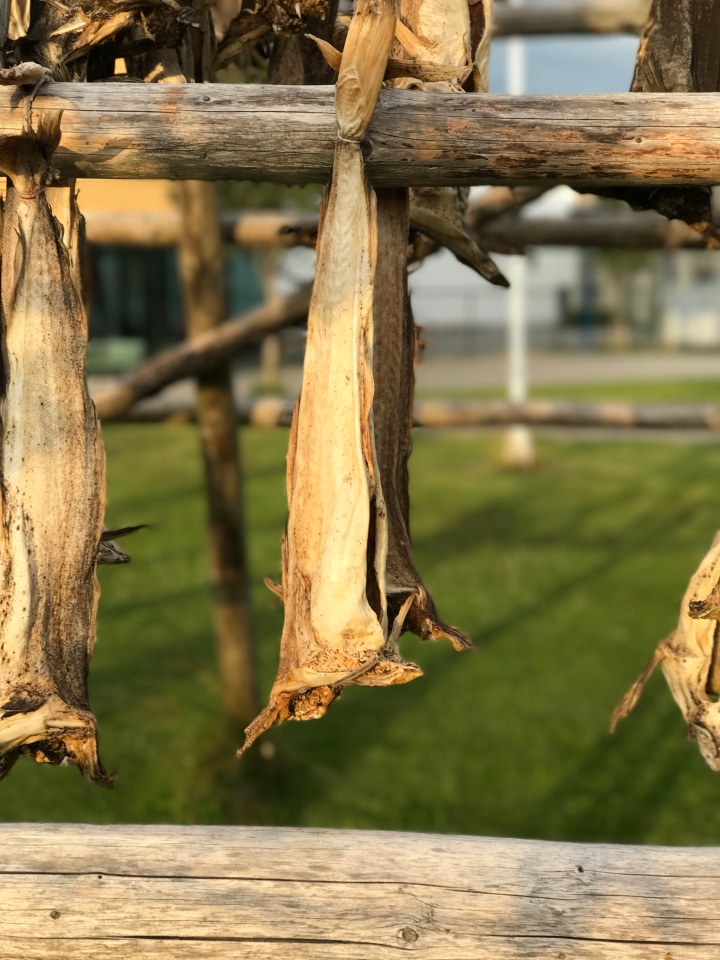
Exiting the ship is about the same. Everyone is loaded down with luggage, packs, children, strollers, canes, walkers, wheel chairs and “whispers” the tour guide amplification item that allows Judit to speak in a normal tone as we walk and we can all hear. The Ricky Bobby syndrome seems to kick in: If you’re not first, you’re last. They must be thinking if they are not the first off the boat they will miss something. There is an admirable gentleman aboard that walks with two canes and each step he takes is about half the length of his shoe. It takes him quite a while to navigate the hallway, the gangway, well everywhere. So if you’re in his group, you have an extra five to ten minutes to get on your bus. I get the impression he is a World War II veteran, so I’m confident the boat will not leave without him. Keep him in sight and you won’t miss the boat.
The vibrations of the ship are also tell tale signs of approaching ports. The engines seem to “gear down” as we get close and the boat rumbles in this “gear” or mode. Also, it sounds like the ship has docking water jets or props of some kind because right under our starboard side windows it sounds like we are pushing ourselves to the dock—there are no tug boats. I have not figured that out yet and will have to ask an officer.
You can tell the new people on board because they come out on deck wrapped up in their cold weather gear. The stand around and leave because it is too cold. Having just spent a week at or above the Arctic Circle, I’m sitting out on the fantail in my t-shirt (though sitting on my reindeer hide, for comfort and now that the sun has dipped behind some clouds, the air temperature has dropped ten degrees.) If you think it is refreshing, it is refreshing. If you think it is cold, it is cold.
There were times when I was wishing for a day of nothing to do; no seating time for dinner, no walks through a village, no excursions, no have to be’s, need to be’s, should be’s or gonna be’s. Reading a book, or even typing these thoughts seems sacrilegious “sailing” through fjords, past the mountains, farms, LNG plants, tankers, wind farms, salmon farms, ships, tugs, trawlers, sail boats, motor boats, the occasional kayaker, suspension bridge, desolate island or purposeful ferry. The orca sighting was one such moment with only two or three of us on the deck after midnight, but at dusky twilight, we first heard, then saw the teenage orca swimming along side the Richard With. Julie and I have video of the event and she has shared hers with the crew, which they were thankful to receive.
We took a group picture and received our final day of instruction from Judit. We learned about procedures for departure from the ship and from the Clarion Hotel in Bergen. We will depart the hotel at 6 a.m. to catch the 9:20 a.m. flight to Stockholm. From there we fly to Chicago. I don’t recall clearing customs in Chicago before, but surely I have coming home on United from Hong Kong long ago. Then we cool our heels in Chicago for a 1:30 a.m. arrival in Dallas on Monday morning. See what I mean? We will need a vacation to recover from our holiday. Cruising with a tour group is hard work, if you are going to get the most out of it. Now, where’s my Aquavit?
A ship of Fools?
One last funny:
